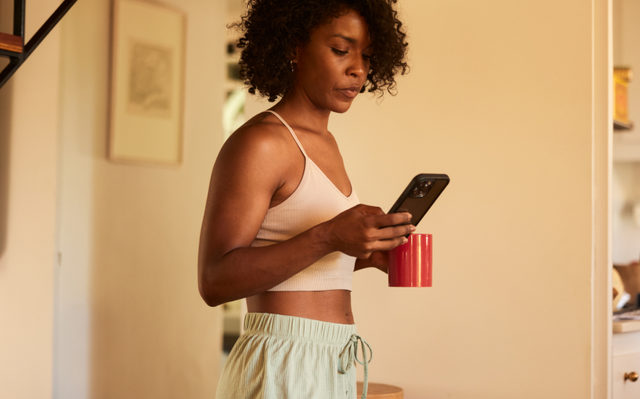This article was written in partnership with LGBTQIA+ organisation, Twenty10.
At any given moment, over 300 million people have their period. Maybe you love yours, maybe you hate it. Maybe it reinforces your sense of self, or maybe it invokes feelings of dysphoria. We all have a unique relationship with our personal cycle, or lack of a regular cycle. But have you ever stopped to think about the relationship between getting your period and your gender?
You might think it’s simple, that women have a uterus and therefore menstruate. But the truth is it’s much more nuanced. In fact, menstruation isn't directly linked to our gender at all; it's a function of our body.
It can be a lot to wrap your head around. So, we talked to our LGBTQIA+ partner, Twenty10, to get a deeper understanding of gender and how it relates to periods. Plus, some things to keep in mind to help all people feel more comfortable discussing this topic.
What’s the difference between gender and sex?
Let’s start with a quick biology 101. When we’re born, each one of us is assigned male or female ‘sex’ based on biological characteristics like genitals, hormones and chromosomes. However, as we grow and are exposed to wider societal structures and environment, we develop our sense of gender. Unlike the physical definition of sex, gender includes the socially constructed norms, behaviours, and roles associated with being a man, woman, or diverse gender.
Here’s a quick rundown:
- A cisgender person’s gender aligns with their sex at birth and societal expectations. For example, you were assigned female at birth, and you identify as a woman.
- A trans person's gender identity does not align with the sex they were assigned at birth. For example, you were assigned female at birth, and you identify as a man.
- An agender person doesn't subscribe to gender as a construct at all.
- Non-binary people experience their gender as not on one end or the other of the spectrum, but rather somewhere in between, or outside of, or away from the binary.
Why do we link gender to periods?
Historically, menstruation has been known as a function of the female body that only affects women. It's a biological process that occurs in the female body, true. But over time, it’s been loaded with cultural and societal meanings that go beyond the physical. Things like shame, expectation and secrecy, or even the idea that getting your first period means you’ve officially ‘become a woman’.
Menstruation doesn’t change anything about your gender – it’s purely a bodily function. Some women get their period like clockwork, while some other women don’t get theirs at all. Some trans men do get their period, some non-binary people get their period. Whether you do or you don’t experience menstruation, it shouldn’t affect how you identify or how you’re treated by others.
As we’ve evolved as a society, it’s more important than ever to destigmatise menstruation, include a wider range of experiences in the conversation, and provide better access to education and period care products to all people who menstruate.
Why is it important to use words like ‘period care’ over ‘feminine hygiene’?
A big reason why menstruation has been linked to the idea of being a ‘woman’ is the continued use of gendered language surrounding periods. Using gendered words like ‘feminine hygiene’ or ‘girls who menstruate’ can contribute to dysphoric experiences for some people.
After all, not everyone who menstruates identifies with the word 'feminine', and not everyone who does identify with the word 'feminine’ gets their period. The word ‘hygiene’ also reinforces the myth that periods are dirty and unclean.
Using inclusive language (or affirmative language) is an easy way to show support. It doesn’t take away anything from women who menstruate, but rather widens the conversation to include more people. It means thoughtfully using words and terms, like ‘period care’ and ‘people who menstruate’, to show we aren’t making assumptions about someone’s gender, body or sexuality.
Finding the right period care for your gender
Period underwear is a great option for all people who menstruate because its discreet, reusable design means you can interact with menstrual blood and products as little as possible. You don’t have to pop out to the shops and face the gendered period aisle, it’s just like wearing a normal pair of undies.
That’s why we created our new All Gender Collection. It features a range of inclusive designs, including our limited-edition Pride Brief and new Pride Longline Short style that combines our patented absorbent technology with a pouch space to comfortably wear a packer – and proudly be yourself.
Explore our Campaign Hub for more advice, articles and support from our LGBTQIA+ partner, Twenty10. Or shop the All Gender range here.






